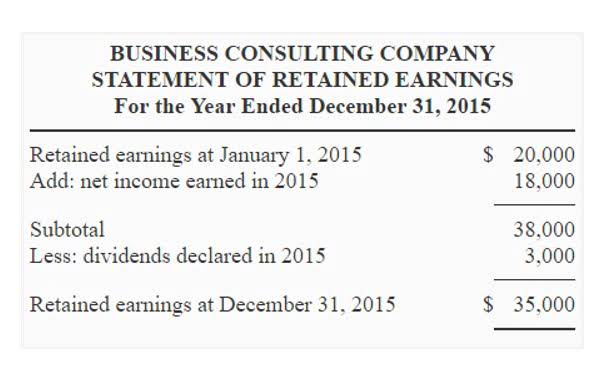What is a Long-term Liability?
Content

The long-term portion of a bond payable is reported as a long-term liability. Because a bond typically covers many years, the majority of a bond payable is long term.
- An issuer amortises any issuance discount or premium on bonds over the life of the bonds.
- For the purpose of the Statement of Net Assets, balances within the Vaccines Group have been excluded .
- It is an agreement where a company gets a loan against a mortgage of immovable property.
- It helps in the calculation of useful financial ratios whose analysis gives meaningful insights about the business.
- The dividend rate can be fixed or floating depending upon the terms of the issue.
- The current portion of long-term debt is listed separately to provide a more accurate view of a company’s current liquidity and the company’s ability to pay current liabilities as they become due.
Typically, companies use long-term loans to purchase major assets for long-term use. Buildings and equipment are examples of items that often require a major loan for purchase. This helps investors and creditors see how the company is financed. Current obligations are much more risky than non-current debts because they will need to be paid sooner. The business must have enough cash flows to pay for these current debts as they become due. Non-current liabilities, on the other hand, don’t have to be paid off immediately. A long-term liability is a debt or other financial obligation that a company expects to pay off over a period of more than one year.
Long-term debt-to-asset ratios vs total debt-to-asset ratios
Together, current and long-term liability makes up the “total liabilities” section. Current accounts usually include credit accounts your business maintains for inventory and supplies. The long-term debt is most often tied to major purchases used over time to operate the business. Long Term Debt is any amount of outstanding debt a company holds that has a maturity of 12 months or longer. It is classified as a non-current liability on the company’s balance sheet. The time to maturity for LTD can range anywhere from 12 months to 30+ years and the types of debt can include bonds, mortgages, bank loans, debentures, etc.
Is a credit card an asset?
Credit cards do not increase your net worth because credit cards are not assets, they are liabilities.
There are a few different methods that can be used to calculate long-term liabilities. The most common method is the discounted cash flow method, which takes into account the expected cash flows and discounts them using a discount rate. This method gives a more accurate estimate https://www.bookstime.com/ of the present value of the liabilities. Another common method is the bond amortization method, which calculates the liability based on the scheduled payments and the bond’s interest rate. This method is more commonly used for bonds than for other types of long-term liabilities.
Example/ List of Long Term Liabilities
In addition, the specific long-term liability accounts are listed on the balance sheet in order of liquidity. Therefore, an account due within eighteen months would be listed before an account due within twenty-four months. A non-current liability (long-term liability) broadly represents a probable sacrifice of economic benefits in periods generally greater than one year in the future.
Is credit bill a liability?
Credit card debt is money a company owes for purchases made by credit card. It appears under liabilities on the balance sheet. Credit card debt is a current liability, which means businesses must pay it within a normal operating cycle, (typically less than 12 months).
It is an agreement where a company gets a loan against a mortgage of immovable property. Since the term of this loan is for a longer period, it is a long-term liability. The process repeats until year 5 when the company has only $100,000 left under the current portion of LTD. In year 6, there are no current or non-current portions of the loan remaining.
Advantages of Long Term Liabilities
The value of long-term liabilities is an important element of the balance sheet. It helps the investors to understand the financial strength of the company. The same is shown as an independent heading in the Balance Sheet as per internationally accepted accounting standards. If a liability is currently due in fewer than twelve months and is in the process of being refinanced so that it is due after a year, then a company can record this debt in long-term investments. Additionally, if a liability is to be covered by a long-term investment, it can be recorded as a long-term liability even if it is due in the current period. Still the long-term investment must be sufficient to cover the debt. These ratios can also be adapted to only analyze the difference between total assets and long-term liabilities.
In evaluating solvency, coverage ratios focus on the income statement and cash flows and measure the ability of a company to cover its interest payments. This is actually a different ratio called the long-term debt to assets ratio; comparing long-term debt to total equity can help show a business’s financial leverage and financing structure. The amount the company borrowed is called the principal, and the periodic annual payments made to the investor are called interest payments.
Deferred compensation
Working capital management is a strategy that requires monitoring a company’s current assets and liabilities to ensure its efficient operation. Noncurrent liabilities are business’s long-term financial obligations that are not due within the following twelve month period. Financial obligations of a company occurring due to previous events which are not due for more than one year in the future.
For the purpose of the Statement of Net Assets, balances within the Vaccines Group have been excluded . Sometimes the firms receive an advance against a contract or service or an advance against the supply of products or services.
What Does “Net Working Capital” Mean?
Some long-term liabilities like debt are to be paid along with a high level of interest. It can be used to calculate long term solvency so as to understand the ability of the company to pay its long-term liabilities. The long-term liabilities help the users to understand the financial health of the company. However, since the government has not yet paid the money back to the business, it is recorded as a liability. There are many examples of long-term liabilities, and we will list a few here. Intent and a noncancelable arrangement that assures that the long-term debt will be replaced with new long-term debt or with capital stock.
Vesting is an important component as it relates to listing the benefit as a liability. Vesting requires a certain number of service years before the employee is entitled to pension benefits. Those vested benefits are listed on the balance sheet as a long-term liability. Management uses long-term liabilities to check specific parameters, such as debt to asset long term liabilities ratio, which shows how many assets have been funded by long-term debt or long-term funds. Similarly, for calculating the debt to equity ratio to know whether the gearing is right for the company or not. This ultimately helps companies to make various decisions about capital structure, and also helps in the ascertainment of their financial position.
A liability is something a person or company owes, usually a sum of money.

Harold Averkamp has worked as a university accounting instructor, accountant, and consultant for more than 25 years. He is the sole author of all the materials on AccountingCoach.com. In between comes the others like senior secured facility, senior secured notes, senior unsecured notes, subordinated notes, discount notes, and preferred stocks. The below graph provides us with the details of how risky these long-term liabilities are to the investors.
How to use long-term liabilities
Short-term liabilities are debts or other obligations that a company expects to pay off within one year. Some common short-term liabilities include accounts payable, accrued expenses, and short-term loans.

